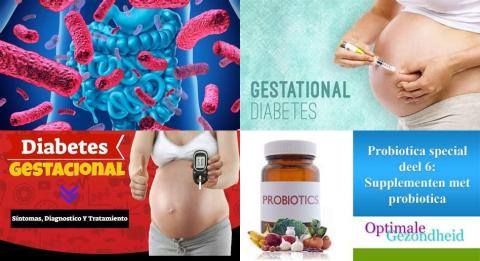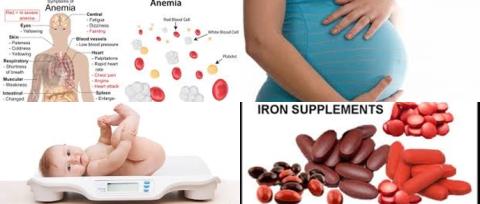Probiotic/synbiotic supplements improve glucose and lipid metabolism in pregnant women with gestational diabetes mellitus

Objectives:
The effect of probiotic/synbiotic supplementation on gestational diabetes mellitus (GDM) is controversial. Therefore, this review article has been conducted.
Do probiotic/synbiotic supplements improve glucose and lipid metabolism in pregnant women with gestational diabetes mellitus?
Study design:
This review article included 11 RCTs with a total of 390 women with gestational diabetes mellitus in probiotics/synbiotics group and 389 women with gestational diabetes mellitus in placebo group.
The mean age of those participants ranged from 26.4 years to 33.5 years.
The duration of intervention ranged from 4 weeks to 8 weeks.
Results and conclusions:
The investigators found compared with the placebo, probiotics/synbiotics supplements were associated with a statistically significant improvement in fasting plasma glucose (FPG) [MD = -2.33, 95% CI = -4.27 to -0.40, p = 0.02, I2 = 74%].
The investigators found compared with the placebo, probiotics/synbiotics supplements were associated with a statistically significant improvement in the homoeostatic model assessment for insulin resistance (HOMA-IR) [MD = -0.40, 95% CI = -0.74 to -0.06, p = 0.02, I2 = 76%].
The investigators found compared with the placebo, probiotics/synbiotics supplements were associated with a statistically significant improvement in fasting serum insulin (FSI) [MD = -2.47, 95% CI = -3.82 to -1.12, p = 0.0003, I2 =73%].
The investigators found compared with the placebo, probiotics/synbiotics supplements were associated with a statistically significant improvement in total cholesterol (TC) [MD = -6.59, 95% CI = -12.23 to -0.95, p = 0.02].
The investigators found subgroup analysis revealed that the kind of supplement led to heterogeneity for FPG and FSI, while heterogeneity was not found for others.
The investigators concluded probiotic/synbiotic supplements improve glucose and lipid metabolism in pregnant women with gestational diabetes mellitus. The use of specific probiotic supplementations containing Lactobacillus acidophilus and Bifidobacterium bifidum (>1 × 106 CFU/g) may be a promising prevention and therapeutic strategy for gestational diabetes mellitus, as they could directly act on the intestinal mucosal barrier and restore the gut flora balance. However, due to the heterogeneity among existing studies, further studies are warranted to address the limitations of existing evidence and better inform the management of gestational diabetes mellitus.
Original title:
The Effects of Probiotics/Synbiotics on Glucose and Lipid Metabolism in Women with Gestational Diabetes Mellitus: A Meta-Analysis of Randomized Controlled Trials by Mu J, Xian Guo X, […], Cao G.
Link:
https://www.mdpi.com/2072-6643/15/6/1375
Additional information of El Mondo:
Find more information/studies on probiotic, diabetes mellitus and pregnancy right here.

